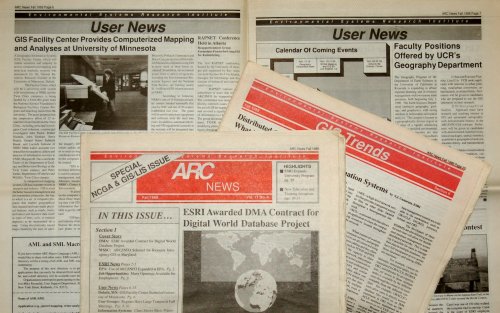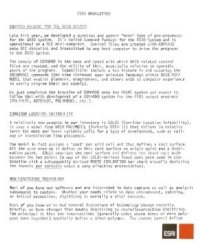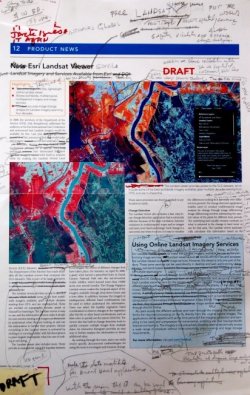I was sitting in Jack Dangermond’s conference room waiting to be interviewed for a position at Esri. It was October 1989, and I was already a huge fan of ArcNews, anxiously awaiting the arrival of each issue in the mail and immediately reading it from cover to cover. So what a thrill to be handed a copy of the Fall 1989 issue, hot off the press, and told “This is so new, Jack hasn’t even seen it yet.”

Today, ArcNews is read by at least 800,000 people every quarter. But its beginnings were much more humble. The first issue of what was to become ArcNews was sent to users in 1979. Just three pages long, it was accompanied by an introductory two-page memo from Jack and then-editor Bill Matteson outlining the purpose of the newsletter:

“We hope that it will be a forum for sharing and that the communication channel will be a ‘two-way street.’ We want you to know what we’ve accomplished in the way of new technology and new experience that may benefit you. On the other hand, we are anxious to know about your uses of our technology, what needs or ideas you have, and whether there is something we can do to support you.”
While ArcNews has stayed true to its principles, it has continually evolved through many different sizes, formats, and designs both on paper and digitally, and long ago attained the distinction of becoming the largest circulation, longest running, continuously published periodical devoted to GIS. And it has always been distributed free of charge.

The legacy of ArcNews is a long track record of educating people—not just about Esri software, but about the potential for GIS to transform processes and organizations. “Time and again I’ve seen that ArcNews stories can spark a thought or a connection in readers outside the industry that an article is about, so that suddenly they see a possible solution to some problem they themselves have,” Tom shared. “This reflects Jack’s vision of the purpose of Esri—to help our users discover what others are doing and what they can accomplish through the power of GIS—and then to share their discoveries.”

Thirty-three years…and counting. What does the future hold for ArcNews? Will it move to an online-only publication? “Online is not a goal,” said Monica Pratt, ArcUser editor and Esri’s publications team lead, “it’s one of the ways we communicate with readers. We are evolving our publications to provide timely, useful information delivered attractively in a variety of formats so as to be most useful to our readers. Those formats include print versions that are being iteratively redesigned, digital flipbook and html, and potentially some mobile platforms.”
What do you think? How would you like to see ArcNews evolve?
[Through the years: Compare the Esri newsletter/ArcNews magazine from 1979, 1984, and today]